
A zookeeper blows on a Dromedary from the other side of a fence at Berlin' s Zoologischer garten zoo on March 14, 2017. (Photo by John MacDougall/AFP Photo)
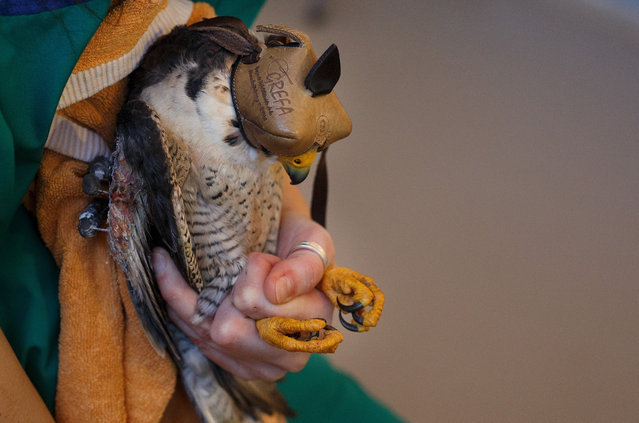
Veterinary Irene Lopez carries a Halcon Peregrino (Falco Peregrinus) after being treated from a broken wing at GREFA hospital on March 16, 2017 in Majadahonda, near Madrid, Spain. The GREFA (Group of Rehabilitation of the Native Fauna and its Habitat) started in 1981, and has since treated over 40,000 animals, with 5600 last year. It is believed to be the largest group of its kind in Europe, treating endangered species like Black Vultures or Golden Eagles, or smaller birds, reptiles or other native species. Their aim is to release them back to their habitats, but when this is not possible the patients may be sent to fauna reserves, zoos or facilities for educational purposes. (Photo by Pablo Blazquez Dominguez/Getty Images)
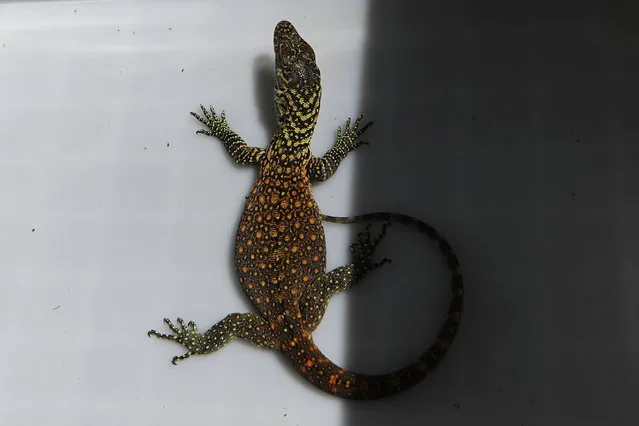
A baby Komodo Dragon dried at Taman Safari Indonesia conservation and recreational parks, on March 13, 2017 in West Java, Indonesia. Twenty-six eggs from one Female Komodo dragon name Ricca, 19, and Male Rangga, 19, were placed in incubation at Taman Safari, batch in 17 August 2016. On March 2 to March 12, 2017 as much twenty-one Komodo dragons have hatched, all under a breeding programme. Five eggs is fail to hatch. A success story that raises hope for the endangered lizard. The hatchlings were the result of a breeding programme that begins with incubation and involves protecting the young from predatory cannibalistic adult dragons. Komodo dragons, the world's largest lizards, can reach around three metres (10 feet) in length and 70 kilograms (154 pounds) in weight and are endemic to a cluster of islands in eastern Indonesia. They are also popular at zoo exhibits around the world. The species is considered vulnerable, with around 3.012 left in the wild. Although deadly attacks are rare, several Komodo dragons have clashed with humans in recent years, the latest victim an Indonesian tour guide who was in last year bitten on the calf in the Komodo National Park. (Photo by Afriadi Hikmal/Barcroft Images)

A keeper shows a baby komodo dragon at Indonesian Safari Park in Cisarua, West Java, Indonesia, Tuesday, March 14, 2017. The baby komodo dragon is one of 21 hatched last week at the park. The giant reptiles are believed to number less than 4,000 in the wild. (Photo by Tatan Syuflana/AP Photo)
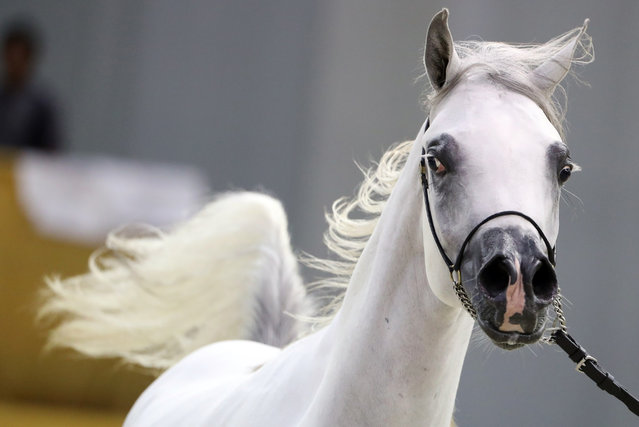
An Arabian Class 9 Mare, yarling colts section, is paraded during the Dubai International Arabian Horse Championship in the Gulf emirate on March 18, 2017. The championship is a competition for purebred Arabian horses which parade during the three-day event to showcase their beauty and talents. (Photo by Karim Sahib/AFP Photo)
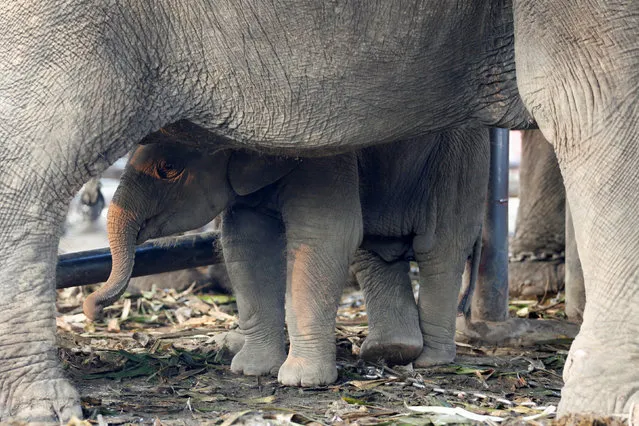
A baby elephant stands under its mother on Thailand’s national elephant day in Ayutthaya, Thailand on March 13, 2017. (Photo by Chaiwat Subprasom/Reuters)
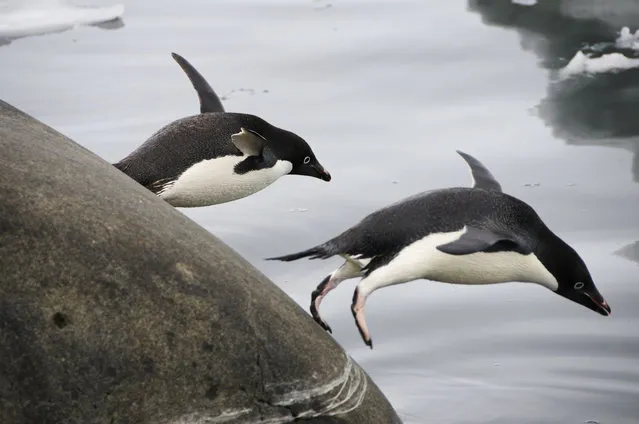
This undated handout photo released by the Australian Antarctic Division on March 15, 2017 shows Adelie penguins diving from the rocks in East Antarctica. .Almost six million Adelie penguins are living in East Antarctica, more than double the number previously thought, scientists said on March 15, 2017 in findings that have implications for conservation. (Photo by Peter Layt/AFP Photo/Australian Antarctic Division)
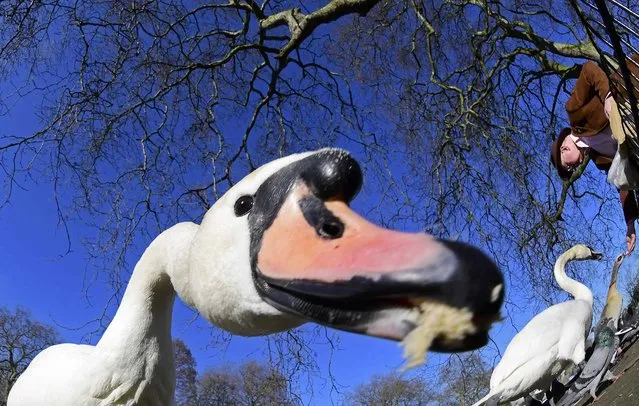
A man feeds swans in the spring sunshine in St. James's Park in London, Britain, March 15, 2017. (Photo by Toby Melville/Reuters)
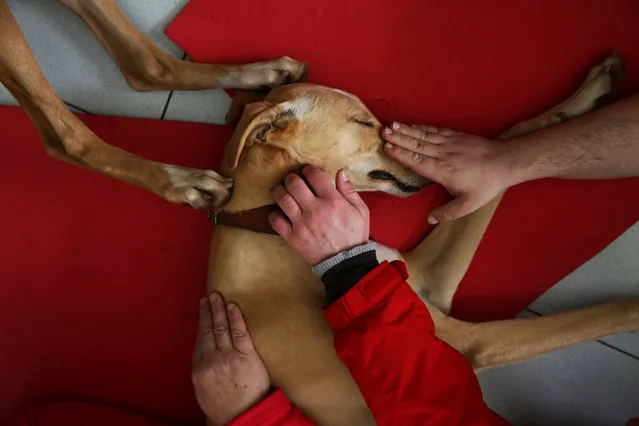
Atila, a trained therapeutic greyhound used to treat patients with mental health issues and learning difficulties, falls asleep as it gets caressed by three patients at Benito Menni health facility in Elizondo, northern Spain, February 13, 2017. Tucked away in Spain's Pyrenees mountains, patients at psychiatric facility Benito Menni stretch out across floor mats and stroke greyhound puppies Atila and Argi. Puppy love is part of the treatment for conditions such as schizophrenia. The facility, based in a town near the border with France, uses the dogs to help patients with intellectual disabilities and mental health conditions develop social skills and a sense of autonomy. Alongside misty views of green rolling mountains, petting sessions with the eight-month-old puppies have a calming effect serving as an emotional outlet for patients who struggle to connect with others. Playing with those who are more active and sitting still with those who find moving a daily challenge, the dogs tailor their behaviour according to the needs of their patient. (Photo by Susana Vera/Reuters)
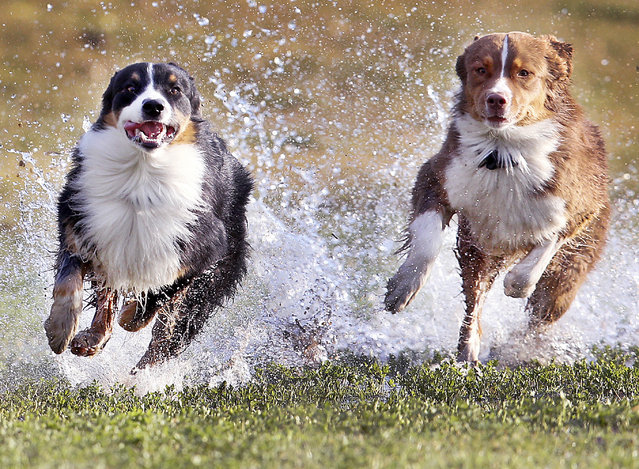
The two Australian shepherd dogs Franz, left, and Lizzi run over a wet meadow in a park in Frankfurt, Germany, Monday, March 13, 2017. (Photo by Michael Probst/AP Photo)
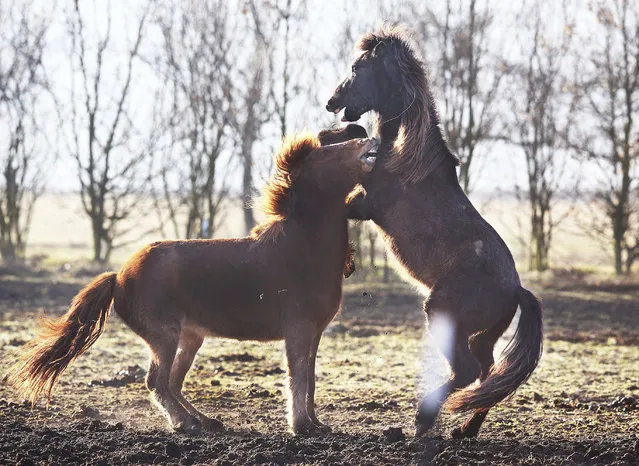
Two Iceland stallions play on their paddock in Neu Anspach, Germany, early Thursday, March 16, 2017. (Photo by Michael Probst/AP Photo)
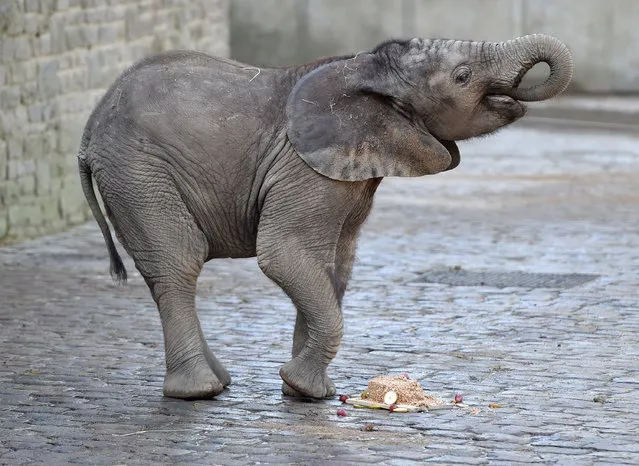
The elephant calf “Tuffi” celebrates its first birthday at the zoo in Wuppertal, Germany, 16 March 2017. Tuffi received a fruit cake on the occasion of its first birthday. (Photo by Caroline Seidel/DPA)
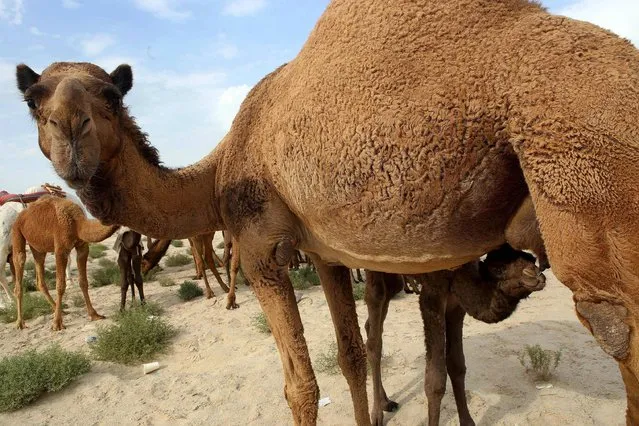
A calf suckles on his mother's teat in the Kuwaiti desert, 65 kms South of Kuwait City, on March 10, 2017. (Photo by Yasser Al-Zayyat/AFP Photo)
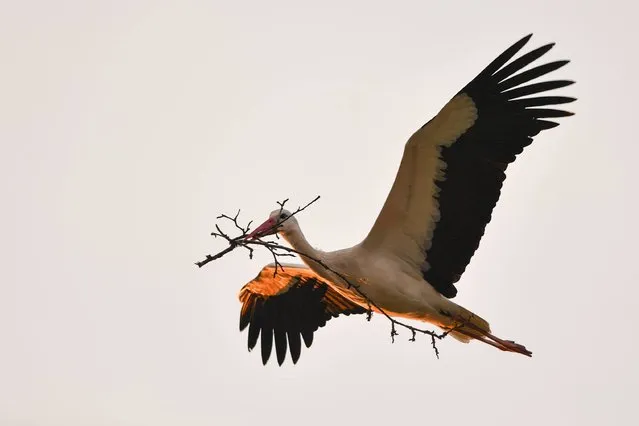
A stork flies in Affenberg Salem, southern Germany on March 16, 2017. (Photo by Felix Kästle/AFP Photo/DPA)
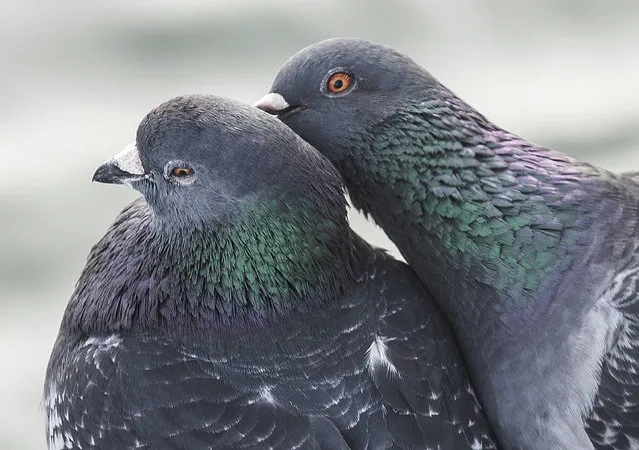
A pigeon nibbles at the head of another pigeon as they sit together on a dock at Bolsa Chica Wetlands in Huntington Beach, Calif., Friday, March 10, 2017. (Photo by Nick Agro/The Orange County Register via AP Photo)
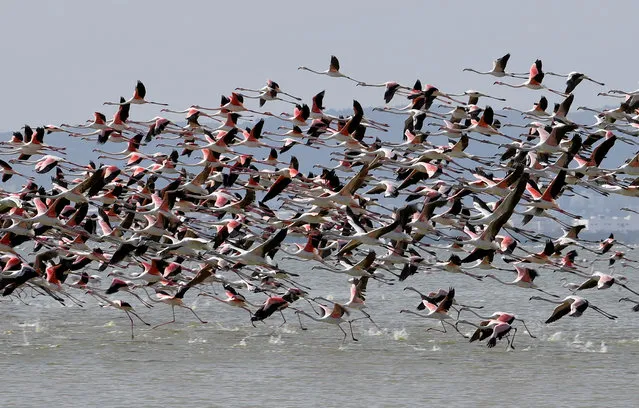
Pink flamingos are seen in a lake on March 14, 2017 in Gammarth on the outskirts of Tunis. (Photo by Fethi Belaid/AFP Photo)
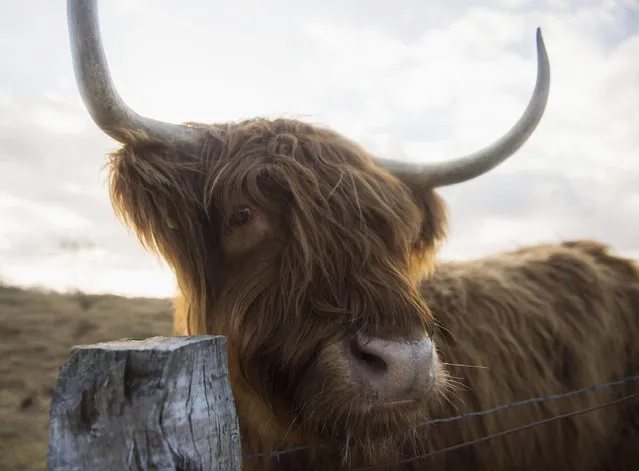
In this March 10, 2017 photo a Scottish highland cattle looks at the photographer on a pasture near Wangels, northern Germany. (Photo by Lino Mirgeler/DPA via AP Photo)
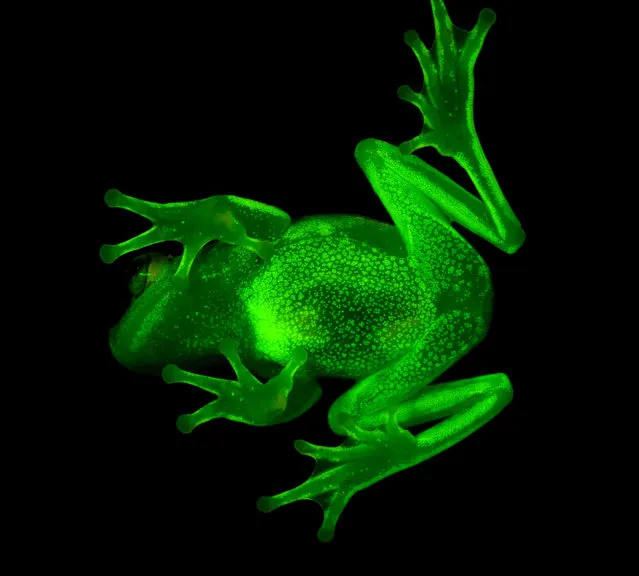
Handout photo relased by CONICET and MACN (Museo Argentino de Ciencias Naturales) researchers Carlos Taboada and Julian Faivovich on March 16, 2017 in Buenos Aires of a fluorescent polka-dot tree frog (Hypsiboas punctatus) that lives in South America. Argentine and Brazilian scientists discovered the first case of natural fluorescence in amphibians in the tree-frog. (Photo by C. Taboada/J. Faivocich/AFP Photo)
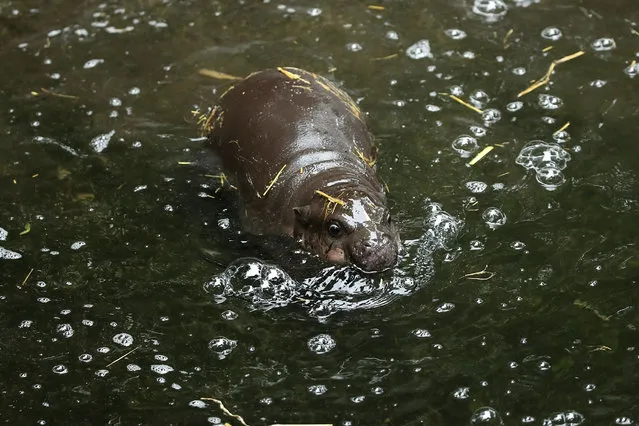
Taronga's yet to be named Pygmy Hippo on display for the first time swims at Taronga Zoo on March 17, 2017 in Sydney, Australia. Born on 21 February 2017, the calf is the first Pygmy Hippo born at Taronga since 2010. With less than 3000 remaining in the wild, Pygmy Hippos are an endangered species. (Photo by Mark Kolbe/Getty Images)
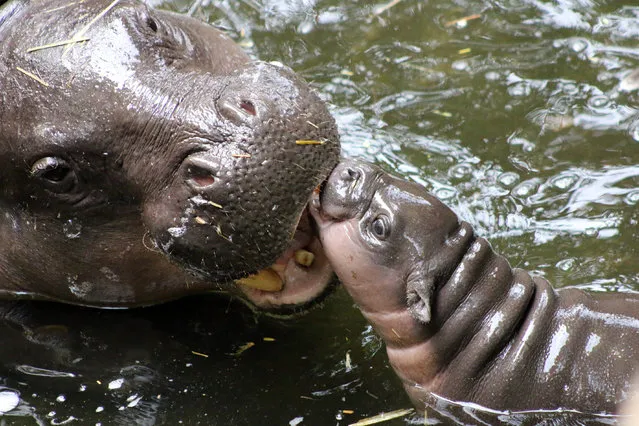
This handout photo released by the Taronga Zoo on March 17, 2017 shows a baby pygmy hippo (R) in the water with her mother “Kambiri” at Taronga Zoo in Sydney Zoo- goers in Australia were introduced to a rare baby pygmy hippo, the first of its kind born at Taronga Zoo in seven years. (Photo by Paul Fahy/AFP Photo/Taronga Zoo)
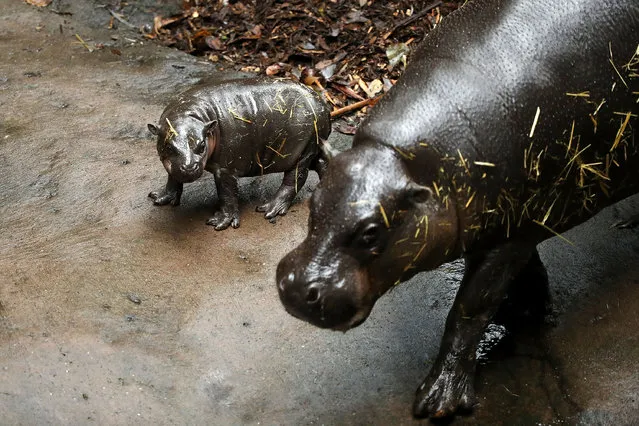
Taronga's yet to be named Pygmy Hippo on display for the first time walks with her mother Kambiri at Taronga Zoo on March 17, 2017 in Sydney, Australia. (Photo by Mark Kolbe/Getty Images)
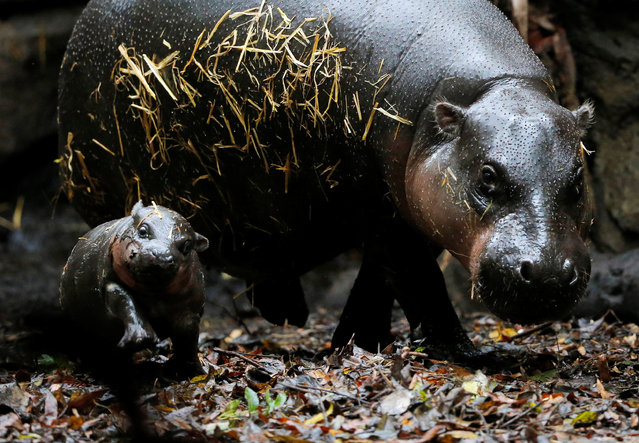
Taronga Zoo's yet-unnamed Pygmy Hippo calf, born on February 21, goes on public display for the first time in alongside her mother Kambiri in Sydney, Australia, March 17, 2017. (Photo by Jason Reed/Reuters)

An Orchid Mantis (Hymenopus coronatus) is perched on the head of a frog hanging from a tree branch on March 15, 2017 in Padang, Indonesia. (Photo by Riau Images/Barcroft Images)
19 Mar 2017 08:02:00,
post received
0 comments
